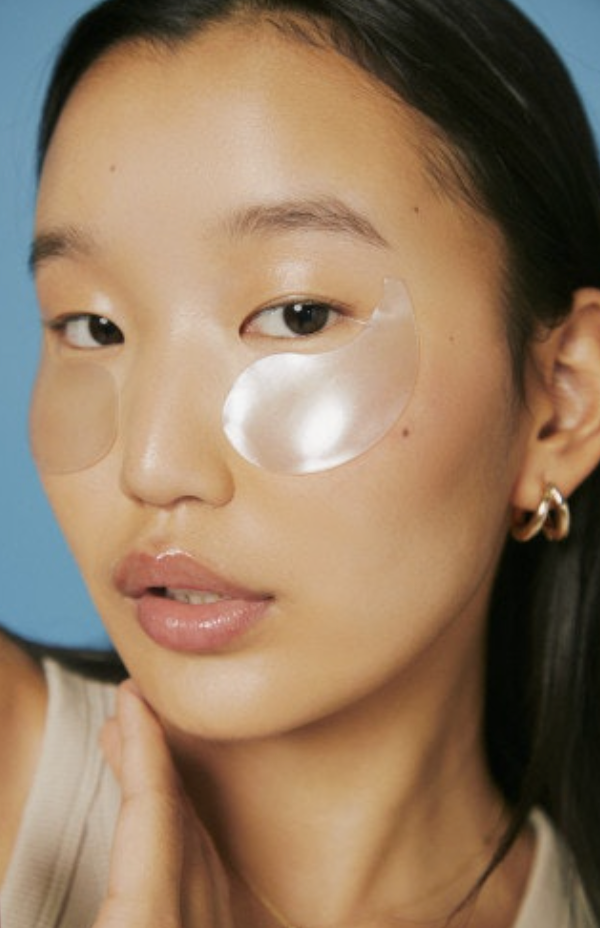Before the burnout, before the spiral, before you’ve even realised that you’re running on empty, your skin already knows.
It turns up in breakouts that don’t quite follow a cycle, in the dullness that your serum isn’t fixing, and in the puffiness that lingers even with a 87 sleep score on your Garmin.
Your skin doesn’t just react to your products, it responds to your life; what you’re holding, ignoring and powering through.
Image Credit: Death to Stock
This piece is about learning to read your skin the way you’d read a close friend’s face: gently, honestly, and with the quiet sense that it’s trying to tell you something. This isn’t about adding another step into your routine, it’s just about tuning in.
Breakouts That Aren’t About Skincare
If you’re part of the Beauty Class community, the chances are, your routine is nailed down to a T. Double cleanse, salicylic acid, SPF, the whole thing. But the breakouts are still happening, every time you’re overwhelmed and pretending not to be.
According to the British Association of Dermatologists, stress doesn’t just live in your mind, it lives in your skin too. It triggers inflammation, suppresses your immune response, and ramps up oil production. Translation? Breakouts, inflammation, and skin that just somehow feels “off.”
Chronic stress = higher cortisol = impaired barrier = increased reactivity
That’s because your breakouts might be triggered by more than bacteria. Stress spikes cortisol, which increases oil production and inflammation. That jawline breakout? It might be less about your moisturiser and more about a mental load your nervous system hasn’t had a chance to process.
Try this: Keep a rhythm log. Not a full-blown journal, just a soft record of the basics: how you’ve slept, how you’ve moved, what you’ve eaten, how you’ve felt. No pressure, no tracking apps, just a quiet check-in each day. You might start to notice patterns: skin flaring up after late nights, dullness on the weeks you skip lunch, puffiness when stress runs high.
Pair it with simple rituals that bring your system back into balance:
- A warm face cloth in the morning instead of a cold shock.
- Four-count breathing while your cleanser sets in.
- Taking ten minutes to pause before the day begins.
Dullness That No Serum Can Shift
It’s not always dehydration. That colourless, low-energy look, the kind that no brightening serum seems to work on, can come from low circulation, chronic fatigue, or simply the accumulation of skipped meals and rushed mornings.
When your nervous system is stuck in go-mode, your skin misses out on the repair and regeneration it needs. This isn’t just a glow issue, it’s your body asking for rest.
Try this: Warm your hands, and take two minutes to massage your face with slow, intentional pressure. No agenda, no multitasking, just connection. This time, the goal isn’t sculpting. It’s softening.
Puffiness That’s More Than Water Retention
Under-eye bags aren’t always about sleep and puffiness isn’t always fixed by drinking more water. It can be a sign of emotional backlog, nervous system overload, or simply the weight of holding everything together without a moment to pause.
When your body doesn’t feel safe to relax, it stores. It braces. Lymph flow slows. Tension holds. Puffiness, in this context, can be your body quietly asking for release, not from a jade roller, but from the constant go-mode you haven’t stepped out of.
Try this: Slow your breath while you cleanse. Exhale through your mouth. Let your jaw unclench, your shoulders fall. It’s not performance, it’s a reset. A reminder that your skin responds to stillness just as much as it does to serums.
What to Do When Your Skin’s Trying to Speak
Don’t panic-shop your way out of it.
Don’t jump straight into actives.
Don’t blame your skin for being responsive.
Instead, notice. Ask what’s shifted and ask how you really feel inside.
This isn’t a replacement for skincare. But when your skin is reflecting what’s happening inside, the answer isn’t always in your bathroom cabinet.
